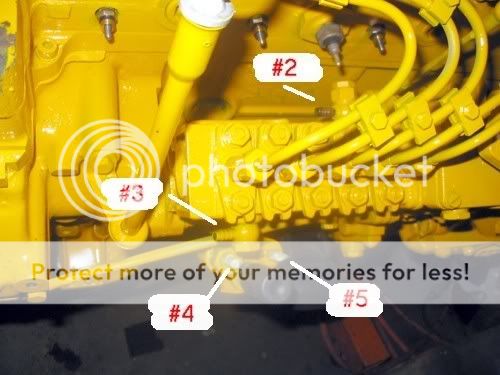 |
 |
 |
 |

|


|
|
|
|
|
|
#16
|
|||
|
|||
|
Quote:
|
|
#17
|
|||
|
|||
|
Thanks for all the replies. I am trying to minimize the complexity of the engine in any way I can. Can I ask a couple more sensor questions in this thread?
I'll post some pics to make it easier. Decribing them is a little tough. I should probably add, that this engine is being mated to a Toyota manual transmission in a base model truck, so I'm trying to get rid of all auto-trans related items no longer needed. Every sensor, vacuum line, switch, linkage, etc. that isn't required is going to go. I went thru the Haynes manual, and can't find the answers on my own. I hope I don't offend the Mercedes purists with this swap. There was nothing left of the 1983 300TD when I bought the engine, so no car was sacrificed for this project. It was rusted away, and hit in the rear. Pics soon (if you're still willing to help me) Roy |
|
#18
|
||||
|
||||
|
Quote:
We will need pictures before we answer any more questions though.  Did you make your own adaptor plate?
__________________
1979 240D- 316K miles - VGT Turbo, Intercooler, Stick Shift, Many Other Mods - Daily Driver 1982 300SD - 232K miles - Wife's Daily Driver 1986 560SL - Wife's red speed machine |
|
#19
|
|||
|
|||
|
#20
|
|||
|
|||
|
Quote:
 If your turbo wastegate hose breaks (which it can do), the boost pressure skyrockets. Without overboost protection, you add full fuel enrichment to all that extra air and you can cook your engine before too long. If you're going to remove your overboost protection system, I would suggest putting in a boost controller or gauge or something. But then again, it's your car and you can do what you want with it. By the way, bypassing the system will NOT give your car added performance. If your car is working better after bypassing, it means your banjo bolt or switchover valve is dirty. The system does not come into play until there is an overboost condition.
__________________
1982 300CD Petrol/Black Leather |
|
#21
|
||||
|
||||
|
Quote:
No, your IP is giving all the fuel it can at when the alda is getting a signal of 12-15 psi, so running at 30 PSI will not give any extra fuel. It will heat things up a bit due to the turbo operating outside of it's efficiency range and stress the engine some, but it will not cause an instant melt down or engine failure.
__________________
1979 240D- 316K miles - VGT Turbo, Intercooler, Stick Shift, Many Other Mods - Daily Driver 1982 300SD - 232K miles - Wife's Daily Driver 1986 560SL - Wife's red speed machine |
|
#22
|
|||
|
|||
|
Here is the pics. Thanks very much for the help. I need to know what these items are, and if I still need them. If needed, where are they routed to.
[IMG]  [/IMG] [/IMG][IMG]  [/IMG] [/IMG]
|
|
#23
|
|||
|
|||
|
[IMG]
 [/IMG] [/IMG][IMG]  [/IMG] [/IMG]
|
|
#24
|
|||
|
|||
|
[IMG]
 [/IMG] [/IMG]
|
|
#25
|
|||
|
|||
|
What is that installed in?
|
|
#26
|
|||
|
|||
|
I'm putting the engine in a 1989 4Runner, mating it to the Toyota 5-speed.
Roy |
|
#27
|
|||
|
|||
|
Anyone want to help me identify these items?
|
|
#28
|
|||
|
|||
|
#1 needs to connect to a switchable vacuum source. It's the shutdown solenoid.
#2 is the IP relief valve. Connects to #15 for return. #3 is IP fuel supply, connects to #13. #4 is lift pump discharge, connects to #14. #5 is fuel supply from tank. #6 is a vacuum switch for EGR valve cold engine cut-out. #7 is N/A. (Provides electrical ground to prevent heater blower operation with cold engine.) #8/9 are vacuum supply. Last edited by tangofox007; 08-26-2008 at 09:27 PM. |
|
#29
|
|||
|
|||
|
Thanks. So vacuum or the "lack of vacuum" shuts the engine off?
|
|
#30
|
|||
|
|||
|
Vacuum shuts it off.
|
 |
| Bookmarks |
|
|